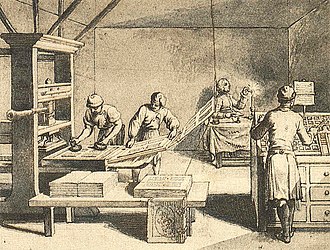Introduction
Unfolding the story of human civilization, one can barely overstate the transformative power of the printing press. Introduced in the 15th century by Johannes Gutenberg, this breakthrough changed the way information was created and shared, significantly affecting societies and cultures worldwide. But how did printing change the world? This post delves into the profound societal and cultural impacts that the invention of printing had on humanity.
Spurring the Intellectual Renaissance
The printing press ushered in an intellectual Renaissance. Before Gutenberg’s invention, books were painstakingly handwritten by scribes, limiting their accessibility and circulation. The advent of the printing press made books affordable and widely available, leading to increased literacy rates and empowering the average person with knowledge. As more people had access to diverse ideas, it paved the way for intellectual curiosity and independent thinking, accelerating the Renaissance’s spread throughout Europe.
Enabling Mass Communication and Social Changes
Another transformative influence of the printing press was its role in enabling mass communication. Disseminating ideas, opinions, and news rapidly and widely, forged a new public sphere. It also fostered a sense of community and shared identity among individuals who had never met.
This newfound ability also stimulated social and political changes. The Reformation, led by Martin Luther, provides a compelling case study. Printed and widely distributed, Luther’s criticisms of the Catholic Church sparked religious debate and lead to significant shifts in religious and political authority.
Shaping Modern Science and Education
Printing had a profound effect on the advancement of science and education. Scientific findings and theories could be printed, shared, and scrutinized by peers, laying the foundation for modern scientific methods. Meanwhile, mass-producing textbooks, made education more standardized and accessible, and transformed it from a privilege of the elite to a universal right.
Impacting Cultural Expression and Preservation
Printing has also had a deep impact on cultural expression and preservation. With the ability to reproduce artworks, music scores, and literary works, the printing press democratized the access to culture. Additionally, printing allowed for the preservation and wide distribution of cultural knowledge. This ensured the legacy of different cultures could be passed down and appreciated by future generations.
Conclusion: The Printing Press – A Catalyst for Global Change
The pervasive impacts on society and culture is how printing changed the world. By democratizing access to knowledge, enabling mass communication, fostering scientific and educational advancement, and preserving cultural heritage, the printing press reshaped the trajectory of human history.
As we navigate the digital age, it’s fascinating to reflect on the revolutionary power of the printing press. Its impacts continue to reverberate, reminding us of the transformative potential that lies within our own era of digital information and communication. Read our blog Timeline of Printing Technology Advancements to learn more about how printing continues to change our world.

